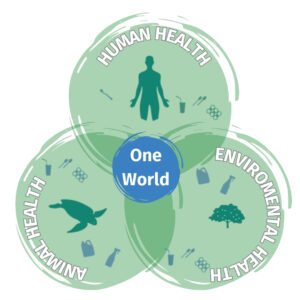Microplastics Environmental and Health Risks
In recent years, microplastics have emerged as a significant environmental and health risk, posing threats to ecosystems and human well-being alike. These tiny particles, less than 5mm in size, are not only pervasive in our environment but also carry potential long-term dangers to both nature and public health. In this post, we’ll explore the environmental and health risks associated with microplastics and explain how Envirowise is leading the fight against this global issue.
What Are Microplastics? Understanding Their Environmental and Health Risks
Microplastics are small plastic particles, less than 5mm in size, that are found all over the environment due to their durability and widespread use. They can be classified into two types:
- Primary microplastics: Manufactured intentionally, found in products like cosmetics and industrial abrasives.
- Secondary microplastics: Formed from the breakdown of larger plastic materials, like bottles and bags, after prolonged environmental exposure.
Sources of Microplastics and Their Environmental Spread
Microplastics originate from various sources, including everyday products and industrial processes. Personal care products like exfoliating scrubs, synthetic fibers from clothing, and plastic pellet spills during manufacturing all contribute to microplastic pollution. Once released, microplastics spread through water, soil, and air, making containment and mitigation efforts incredibly challenging.
Environmental Impact and Health Risks of Microplastics
The environmental impact of microplastics is severe. In oceans, marine animals often mistake microplastics for food, which leads to ingestion, causing blockages, malnutrition, or even death. These particles can also bioaccumulate, moving up the food chain and eventually reaching humans.
On land, microplastics contaminate soil, affecting plant health and disrupting ecosystems. This contamination has far-reaching consequences on wildlife, which rely on clean soil and water.

Human Health and Economic Costs
Microplastics don’t just harm the environment; they also pose a potential risk to human health. Detected in seafood, drinking water, and even the air we breathe, these particles may enter our bodies, raising concerns about long-term health impacts. The economic toll is also significant, with cleanup efforts costing billions annually and industries like fisheries and tourism facing potential losses.
Envirowise’s Role in Addressing Microplastic Pollution
At Envirowise, we understand the urgency of addressing the microplastic crisis. We are committed to sustainability by providing microplastic-free alternatives to traditional plastic products. Our mission is simple: Reduce the environmental impact of our products and lead the way in creating a healthier, microplastic-free world.
We are taking actionable steps, such as:
- Offering sustainable, microplastic-free products
- Expanding our range of eco-friendly plastic substitutes
- Advocating for responsible business practices within the industry
By continuously innovating, we aim to make significant progress in the fight against microplastics.
Conclusion: Join the Movement Against Microplastic Pollution
Although microplastics are invisible to the naked eye, their damage is far-reaching. It’s time to act and address this invisible threat to our environment and health. At Envirowise, we’re not only responding to the challenge—we’re leading the charge. Join us in the journey toward a microplastic-free future by choosing sustainable products that make a real difference. Check out our new products here.
